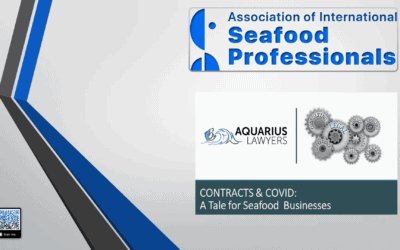The Effects of the New EPA Maritime Fuel Rule
Some of the biggest issues in the maritime industry have to do with fuel. That’s why with the U.S. Environment Protection Agency (EPA) adopting new standards, many shipping and fuel companies have started to worry about what it means to them, and if it will actually achieve its ambitious goals.
EPA is going after a coordinated strategy that includes:
– Clean Air Act standards;
– implementation of the international standards for marine engines and their fuels;
– adherence to International Convention on the Prevention of Pollution from Ships (a treaty called MARPOL);
– designation of U.S. coasts as an Emission Control Area (ECA).
The projected results are that by 2030 this strategy will reduce annual emissions of NOx in U.S. by about 1.2 million tons and PM emissions by about 143,000 tons.
The changes are important for three reasons:
- The U.S. is an innovator and leader in the industry and sooner or later many other countries will need to follow its example
- Shipping and fuel companies that not only originate but also operate in U.S. waters will need to adhere to the rules (meaning it is a regulation that will affect the whole planet)
- The ones affected by the new regulations will not be only sea farers but members of the whole shipping industry
The International Maritime Organization or IMO, has already approved a U.S.-Canada proposal to amend MARPOL Annex VI to designate an ECA off the coasts. This would mean that ships that affect U.S. air quality meet NOx and fuel sulfur requirements while operating up to 200 nautical miles off U.S. coasts.
It is important to know that these new regulations have significant benefits for society and their importance is the base for the new rule. This is expected to happen by 2030:
– reduce annual emissions of NOx in the United States by about 1.2 million tons and PM emissions by about 143,000 tons.
– reduce NOx emission rates by 80 percent and PM emission rates by 85 percent, compared to the current limits applicable to these engines.
– annually prevent between 12,000 and 31,000 premature deaths, 1,400,000 work days lost, and 9,600,000 minor restricted activity days.
A pessimistic estimate of the monetized health benefits ranges from $99 billion to $240 billion. These estimated benefits exceed the projected costs by a ratio of over 30:1 so the EPA had no other choice but to adopt the changes.
The reverse effect
However, some shipping and fuel company representatives have expressed worries that the new regulations will actually have a reverse affect and increase on-shore pollution and clog roads. This will in turn increase shipping costs and change the business scene in the U.S.
Many companies rely on maritime shipping to keep costs as low as possible and if the changes produce an increase in prices, the case might be that the cost of the new standards would be much higher than projected.
The good news is that complaining parties have offered solutions and adjustments to the new rules and regulations so that the goals can be achieved without negatively influencing on-shore businesses.
It’s safe to say that the regulation is not final and there will be much discussion going on until it becomes clear who and how it will benefit in the long and short run.
The new EPA standards that require very low sulfur fuels in ships operating within the 200 nautical mile (nm) boundary of the North American Emission Control Area (ECA) are the logical step in ensuring clean air and waters. However, the industry is tense in expectation of the changes to follow.
Are the costs of shipping going to increase? Are there going to be new regulations posed on on-shore shippers? This remains to be seen in the near future. If the EPA regulations do not affect on-shore shipping and pollution, the newly adopted standards might become the international norm in a couple of decades.
Sources: http://www.epa.gov
http://www.maritime-executive.com



